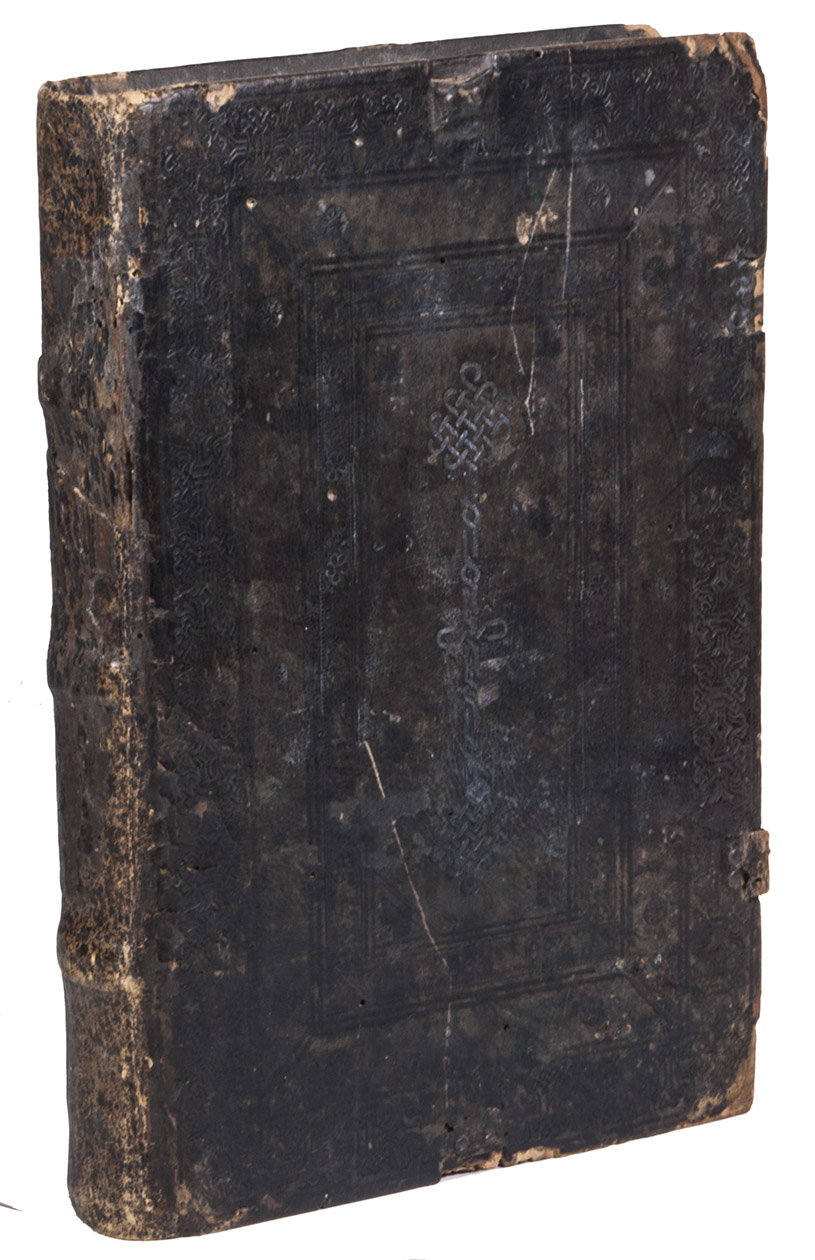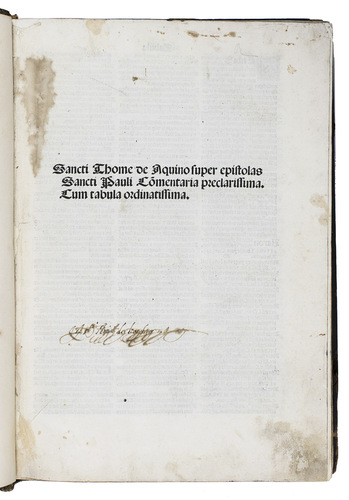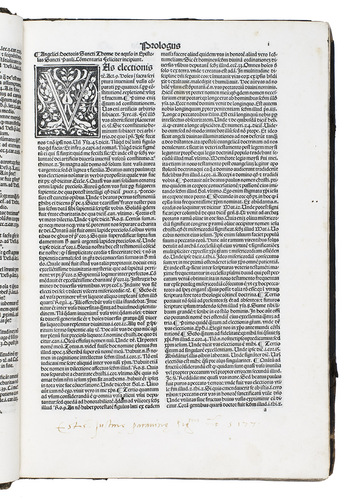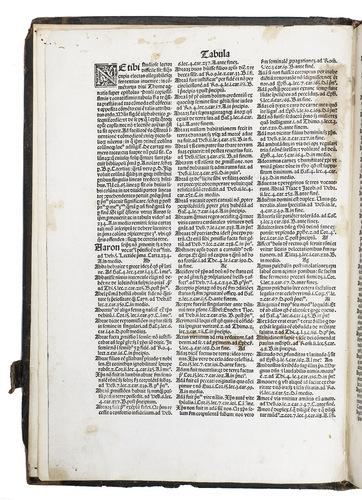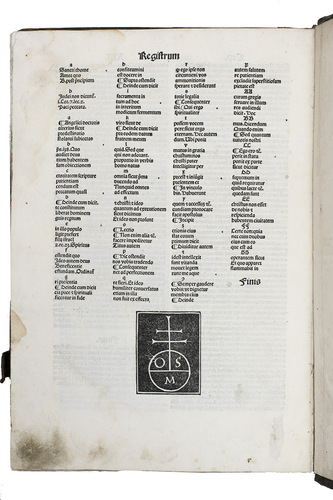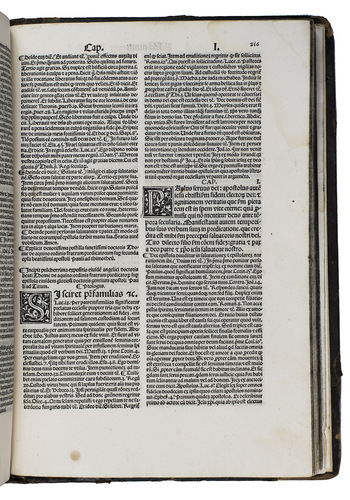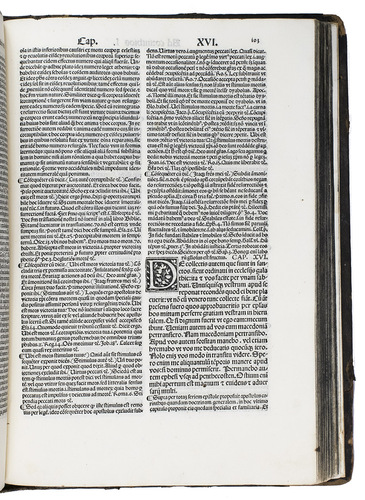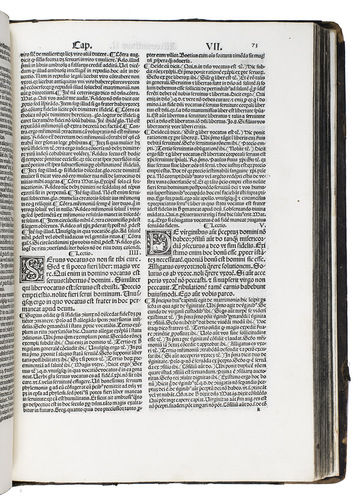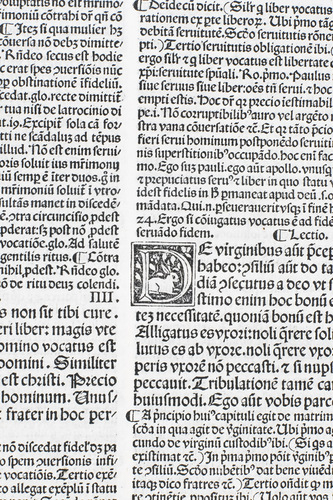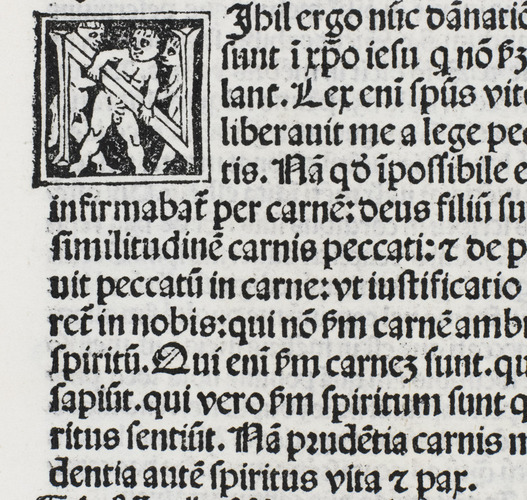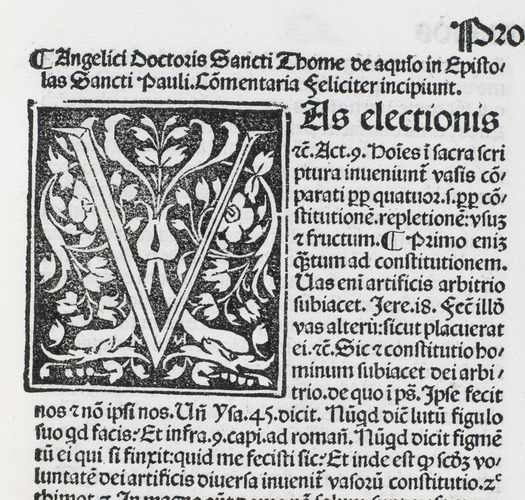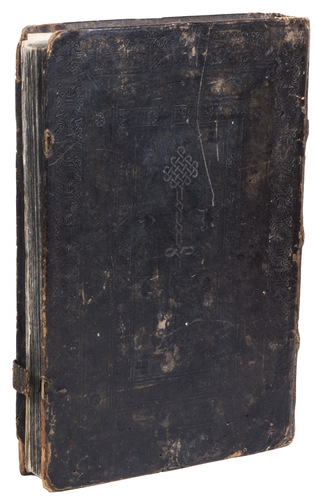AQUINAS, Thomas.
Sancti Thome de Aquino super epistolas Pauli. Super epistolas Sancti Pauli[.] Co[m]mentaria preclarissima. Cum tabula ordinatissima. [= In omnes epistolas Pauli].
[Colophon:] Venice, Bonetus Locatellus for Octavianus Scotus, 22 December 1498. Folio (32.5 x 22.5 cm). Printed in two columns. Contemporary Venetian(?) blind-tooled, blackened tanned calf over bevelled wooden boards [12], 260, [1] ll.
€ 7,500
Third (and last incunable) edition of a classic work by Saint Thomas Aquinas (1225-1274), in the original Latin, on the epistles of St. Paul, providing a profound explanation of the teachings of one of the most eminent theologians of the Catholic Church. The first edition, edited by Pietro Malduro or Petrus of Bergamo (ca. 1400-1482), appeared at Bologna in 1481 and apparently served as the model for the second at Basel in 1495. The Basel edition is by far the most common, and probably served as the model for the present edition (the prologue appears to be the same, though the "Petrus Bergomensis", explicitly credited in the Basel edition, is not named in the present edition. Drawing from the texts of the New Testament, Aquinas addresses various issues that pertain to the moral conduct of a devout Christian, making this work a valuable resource. Aquinas wrote his commentary on Saint Paul's Epistles near the end of his life. He is believed to have written the explanations for the Epistle to the Romans and the beginning of the first Epistle to the Corinthians himself, while most of the other sections were reportationes (transcriptions by someone from the audience of an oral presentation) of Thomas's work, written by Reginald (Raynald) of Piperno (ca. 1230-ca. 1290). Essentially, Reginald "reported" on practically all of Saint Paul, up to and including the Epistle to the Hebrews. It is also believed, however, that Aquinas revised all of the reportationes except for the Epistle to the Romans. Reginald documented several of Aquinass other works, and he was Acquinass confidant in all of his various activities. He also heard Aquinass last confession and kept all manuscripts in the authors own handwriting ("habuit omnia scripta sua"). After Aquinass death, Reginald filled his post as lecturer in the priory at Naples.
The book opens with an alphabetical index that occupies all but the title-page in the preliminaries (a-b) with instructions for its use. The main text begins on the first leaf following the preliminaries, also signed "a" (where the leaf numbering also begins). The main text begins with a prologue, followed by Aquinass commentaries on the Epistle to the Romans, the first and second Epistles to the Corinthians and further to the Galatians, the Ephesians, the Philippians, the Colossians, the first and second Epistle to the Thessalonians, the first and second Epistle to Timothy, and the Epistles to Titus, Philemon and the Hebrews. This is followed by the colophon at the foot of GG5r (below "Finis"), which notes that the book was printed in Venice with the types of Bonetus Locatelli from Bergamo under the guidance of and at the expense of Octavianus Scotus ("caracteribus Boneti Locatelli impressa: ductu vero & impensis ... Octaviana Scoti"), on 22 December 1498. The verso of that leaf (the last printed page of the book) lists the books contents, quire by quire and shows Scotuss (4th) publisher's device (again following "Finis").
The final blank leaf has been cut out and what appears to be a contemporary blank leaf reattached, but it is not the original blank (which would have had a watermark and more widely spaced chainlines). The first preliminary quire has some restorations, with the title-page attached to the reinforcing and a small dark stain in its gutter margin, slightly affecting the text on the verso. One, two or three small wormholes appear in many leaves, mostly in the margins, but two appear within the text block in the last 20 leaves, with no significant loss. The second half of the book has a faint water stain in the upper outside corner, mostly in the margins but crossing the corner of the text block. The book has been rebacked, as noted, and only a small part of the original backstrip survives (with a cut across it). Internally still in very good condition; in spite of the small defects in the covering, the binding remains in good condition except for the spine and the missing parts of the fastenings. Bod-Inc T127; Goff T235; GW M46154; HC 1341; IDL 4357; ISTC it00235000; IBP 5259; Pellechet 943; Polain 3696; USTC 990458; not in BMC.
Related Subjects:
